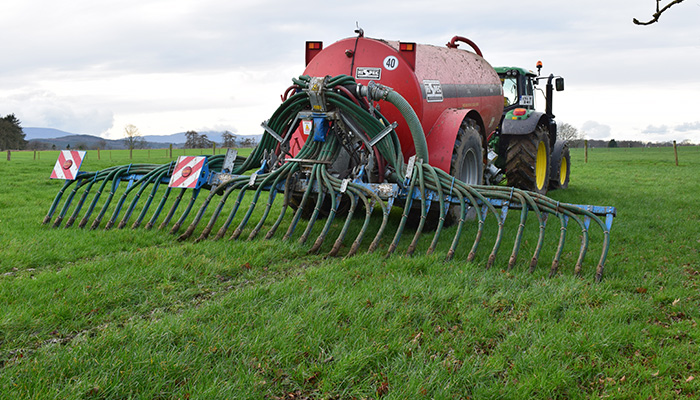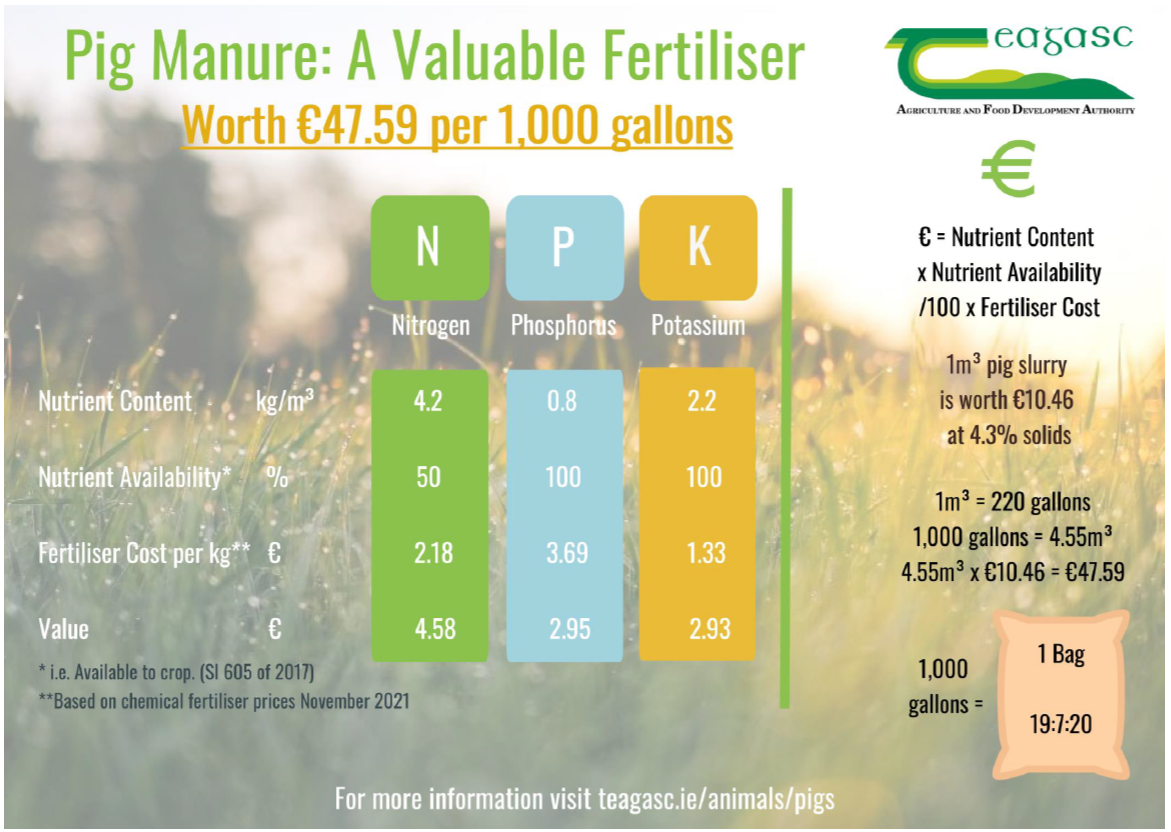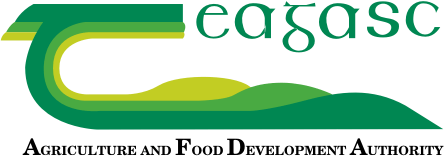28 January 2022
Using pig slurry to save money makes more sense than ever

Pig slurry is now worth €48 per 1000 gallons. This double its normal value because fertiliser prices have never been so expensive. Using pig slurry can save you money – now more than ever before! Amy Quinn, Teagasc Pig Development Department has guidance for farmers importing pig slurry here
With the nitrate regulations that now exist it is possible to calculate the amount of organic fertiliser a farm can use in the current year at the start of the year. Good decision making can now allow a farmer save money on chemical fertilisers – why don’t you get the calculation done for your farm??
For a farmer using Pig Slurry:
The calculation of how much pig slurry a farm may use is dictated by firstly staying below the 170 kg of Organic Nitrogen (N) per hectare. This is based upon the N&P statement from the previous year which is a record of the bovine animals on the farm. If you have other grazing animals (sheep, goats, horses, donkeys and/or deer) on the farm these need to be added to the Organic N calculation.
The second part of the calculation is to ensure that you do not exceed the Phosphorus (P) requirements for the farm. This is where soil test results can be important, particularly if the soil P index is 1 or 2 for some plots on the farm.
The following factors are part of the calculation:
- The Organic N Stocking rate of the holding (excluding imports) affects the Phosphorus requirement on grassland.
- If silage or hay is sold off the farms (stocked at <85 kg grassland stocking rate) it will increase the P requirement for the farm.
- The quantity of concentrated feedstuff used in the previous year must be factored into the calculation.
- If chemical fertiliser containing P is purchased in the current year it will reduce the volume of pig slurry that the farm requires.
The area of various crops and the soil P levels for each crop is critical to this calculation.
List of items a farmer needs to have for a fertiliser plan for the coming year:
- N&P statement from the previous year.
- The number of non-bovine animals on the farm in the previous year (e.g. sheep, horses, etc).
- Total tonnage of feed concentrates fed to grazing livestock in the previous year.
- Planned tonnage of chemical fertilisers for the current year.
- Soil test results, area of plots and crops in each plot in the current year.
Note:
Soil test results are only valid for 4 years after taking the soil sample. A sample should be taken for an area of 4 hectares (or a max of 5 ha. in exceptional circumstances).

The Pig Development Department (PDD) issue an article on a topic of interest to pig producers on Fridays here on Teagasc Daily. Find out more here about the Teagasc Pig Development Department here
